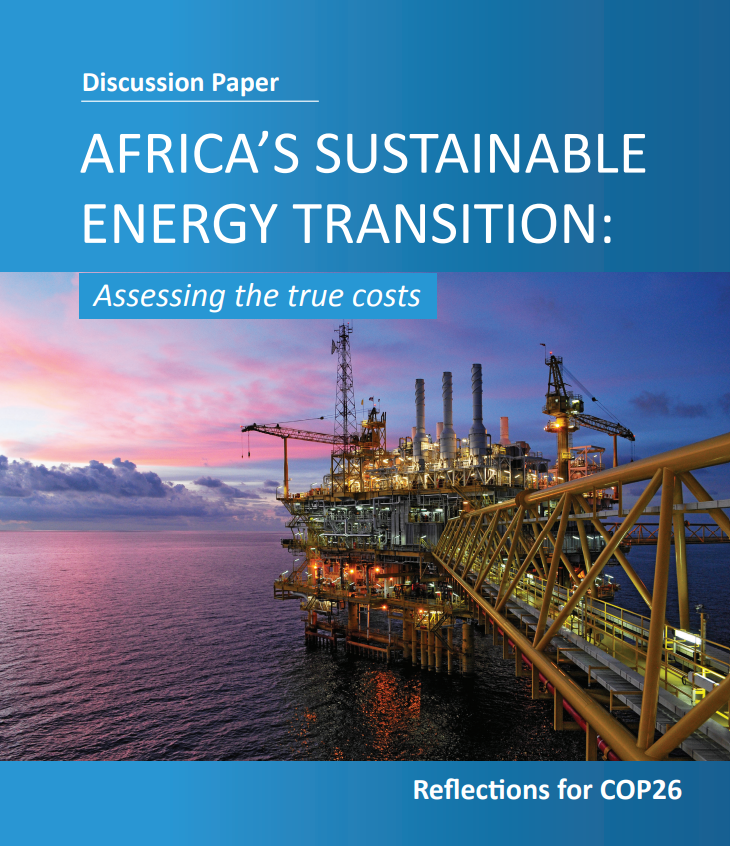Thought Leader Interview with Engr. Kabiru Adamu, General Manager, System Planning and Development Department, Transmission Company of Nigeria
Our guest today is Engr. Kabiru Adamu, a confirmed speaker for the upcoming Puttru event titled ‘EnergyMingle.’ Engr. Adamu currently serves as the General Manager for the Department of System Planning and Development at the Transmission Company of Nigeria (TCN).
In this interview, he provides exclusive insights into the impact of the new Electricity Act, signed by President Bola Ahmed Tinubu. This Act is expected to act as a catalyst for attracting the much-needed investment into the Nigeria Electricity Supply Industry (NESI), and he explains how the Act will meet this expectation.
It is an Act we all need to study, whether you are in the Transmission, GENCO, or DISCO value chain, to comprehend how it impacts your business and your present operational methods.
What is the core mission and mandate of TCN?
Firstly, TCN, the Transmission Company of Nigeria, plays a key role in providing transmission services, establishing transmission infrastructure, operating, and maintaining it.
The second part of our responsibility involves the day-to-day operations related to the interconnection between the transmission system and two other segments of the power system value chain, specifically generation and distribution; system operation falls under the purview of TCN.
The third aspect of our role involves serving as the market operator that administers the wholesale electricity market and oversees its growth.
What is involved in power transmission system planning?
Planning the transmission system involves examining electricity demand across the country, assessing the demand’s magnitude through investigative studies like demand forecasts to determine the necessary power capacity to serve Nigerian consumers. We then evaluate the potential and availability of generation resources to meet this demand. Next, we focus on planning the transmission system, connecting generation resources with the demand side to efficiently deliver the generated power to end-users, ensuring that Nigerian consumers have access to electricity. This planning role bridges the gap between the two ends, guaranteeing the presence of adequate infrastructure while looking to the future. Essentially, our work revolves around long-term planning, forecasting future electricity needs , and implementing programs to establish the required infrastructure within feasible timelines to meet these demands.
What are the financial and technical challenges associated with enhancing and expanding Nigeria’s transmission infrastructure?
Data and data integrity represent one of the prominent challenges we face…This directly impacts the pace at which we can execute projects
Starting with the technical challenges, one of the critical factors in efficient planning is data quality. Planning heavily relies on data, and it must be both qualitative and obtained from a reliable source. As you engage in periodic planning activities, the availability of high-quality data becomes critical. This ensures that your assumptions and projections, which inherently involve peering into the future, align with reality when planning concludes. The data quality must be solid. For instance, let’s say that you’ve planned the establishment of a specific transmission infrastructure five years down the road, then commence with feasibility studies, project design, procurement, and implementation, all aimed at making sure that the project becomes operational in year 5. If, however, the data used in forecasting and planning lacks credibility, and as reality unfolds, it diverges from the plan, your investment can become stranded. Given that transmission systems demand substantial capital, a judicious approach is necessary before expenditures are incurred. Data and data integrity represent one of the prominent challenges we face. The sources of this issue are often elusive. After scrutinizing the data, sometimes we find ourselves with data that lacks in integrity. This directly impacts the pace at which we can execute projects. Beyond data, having the correct data opens the door to examining various least cost options, allowing us to consider multiple options and opt for the most cost-effective solution for implementation.
…the liquidity crisis within the Nigerian electricity market continues to affect us. TCN is among the entities grappling with revenue recovery challenges in this market.
Turning to financial resources and challenges, unquestionably, this is a pertinent concern since transmission infrastructure is capital-intensive. TCN predominantly depends on one financing source, occasionally supplementing this with support from the federal government as a secondary source. Our primary source is internally generated revenue, derived from the services we currently provide in the Nigerian electricity market. This revenue serves our daily operations and is intended to cover the capital expenditure needed for system implementation. Nevertheless, the reality is that the liquidity crisis within the Nigerian electricity market continues to affect us. TCN is among the entities grappling with revenue recovery challenges in this market, hindering our capacity to roll out projects. While we do receive federal government interventions, these allocations often fall short of the requirements for our ongoing projects, leading to project backlogs. As a government agency, we have the opportunity to access loans from multilateral financing organizations to drive certain critical projects, some of which are underway, while others have been successfully completed. Our goal is to deliver more projects, as this not only expands our service capabilities but also increases our revenue streams.
How does TCN stay informed and adapt to changes in renewable energy regulations at the global level?
Renewable energy represents a major global transformation, and as TCN, our only choice is to adapt to this revolution. We’re dealing with the profound impact of climate change and the integration of renewable energy sources as a means to mitigate these climate effects. In the area of electricity, there exists substantial potential for harnessing renewable energy sources to facilitate clean and environmentally friendly electricity generation.
Once these renewable resources are developed, they must be integrated into the transmission system, as this is the sole means by which the power generated from these sources can be effectively transmitted to demand areas. TCN is fully committed to adapting, actively working to ensure we remain at the forefront in terms of adoption and the interoperability measures required for integrating renewable energy. In our pursuit of this endeavor, we have our Research and Development department dedicated to exploring these challenges.
…we are conducting independent studies to explore the possibilities, pros, and cons associated with the integration of renewable energy into our system.
Within the Planning Department, we are conducting independent studies to explore the possibilities, pros, and cons associated with the integration of renewable energy into our system. We are also identifying the necessary mitigations to address the intermittent nature of these renewable sources. Our aim is to develop solutions that ensure the integration of these sources would not compromise the integrity and stability of the grid.
We firmly believe that this is a challenge we can overcome; however, it necessitates a cautious approach. We must, however, refrain from jumping into things without the support of comprehensive findings from systematic studies. These studies help to shed light on the potential impacts and required mitigations prior to approving any connection.
For example, when a developer expresses interest in a renewable energy project, our initial step is to conduct a thorough capacity and availability study of the grid to assess its suitability for connecting that plant. Once we determine that the grid has the necessary capacity and availability to integrate the power generated, we move on to assessing the requirement for flexibility in addressing the intermittent nature of renewable energy. This involves conducting further studies, including stability assessments and flexibility studies, to understand the level of intermittency. By analyzing forecasted weather conditions at the plant’s location and examining historical data for patterns of fluctuations, we can make informed recommendations regarding the infrastructure needed to integrate the plant without jeopardizing grid integrity.
Let’s talk about the new Electricity Act
The Electricity Act has opened the sector and industry to private sector participation, which is expected to generate investment opportunities throughout the value chain, especially in the distribution and transmission system. The distribution segment has been restricted by the control of DISCOs, limiting third-party participation beyond the DISCOs’ jurisdiction or control. However, the new Act has created opportunities for other interested parties to engage in the distribution business, under the jurisdiction of the States. The Act empowers the States to assume authority over electricity regulatory operations.
In the Transmission segment, provisions exist for Independent Transmission Networks and Independent Transmission Operators, offering numerous opportunities across the board.
READ NEWS ARTICLE: Expert seeks decentralisation of TCN to attract investors
Now, talking about GENCOS and DISCOS, how can power sector players prepare for the Act’s Implementation?
Talking about GENCOs and DISCOs, while this falls outside TCN’s purview, an examination of the Act suggests that no changes are expected for GENCOs. This sector has consistently been marked by robust competition and remains open to investment from any interested party.
However, the DISCOs, who are now experiencing this for the first time, find themselves open to competition. I believe the DISCOs now need to scrutinize the Act, assess their vulnerabilities concerning the Act’s provisions in relation to potential competitors. Most of the anticipated competition is likely to emerge as a result of the Act.
Anticipate regulatory changes, especially since State governments have been granted the authority to establish their own regulatory frameworks, and DISCOs operate directly with the States. Currently, each DISCO covers about 3 to 4 states. Now, envision the potential complexity if every State decides to create its unique regulatory framework. DISCOs will have to navigate intricate regulatory compliance across multiple states. Therefore, they must undertake comprehensive efforts to dissect the Act, strategically position themselves for competition, and leverage opportunities in a manner that aligns with their strengths and objectives.
The Electricity Act has opened the sector and industry to private sector participation, which is expected to generate investment opportunities throughout the value chain
Anything else you would like to add about the Act?
It is an Act we all need to study, whether you are in the Transmission, GENCOs, or DISCO value chain, to comprehend how it impacts your business and your present operational methods. This will allow you to formulate strategies for fitting into the new structure, ensuring your ability to achieve sustainability.
Sustainability is a fundamental necessity for any business. Given the evolving regulations and market changes, it’s imperative to evaluate how these factors will influence your sustainability and determine the optimal approach for aligning with the new regulations.
Therefore, I encourage all industry stakeholders to scrutinize the provisions affecting their current operations and to strategize how to fit into the future landscape.

Check out this publication to learn more about grid stability and renewable energy integration.







